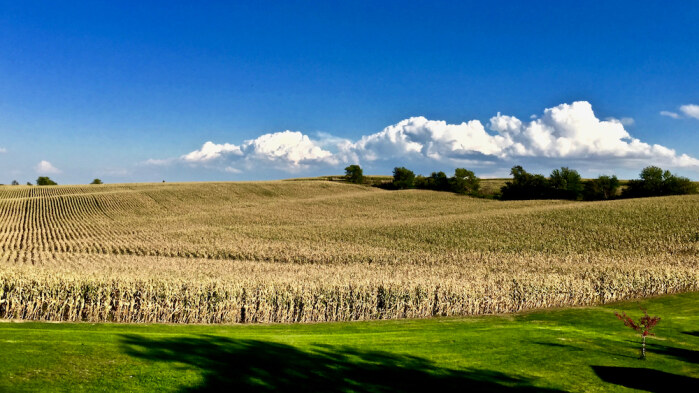Linda Schreiber is a member of the League of Women Voters of Johnson County.
Rural policy is an area where Republicans and Democrats should be able to find common ground (no pun intended). The new Congress presents a real opportunity as work begins to pass a Farm Bill in 2023. This legislation is renewed roughly every five years to authorize rural development programs at the U.S. Department of Agriculture. The current Farm Bill will expire on September 30, 2023.
Reauthorization allows policymakers the ability to review programs included in the legislation, consider changes, and address implementation barriers that may have come up since the previous Farm Bill passed.
Reauthorizing the Economic Development Administration presents another opportunity. However, it’s likely that discussions will be limited to food stamps, agricultural subsidies, and conservation investments instead of giving rural development the focus it deserves.
The U.S. needs a rural policy renaissance to bridge the urban-rural divide.
Today, farming represents only 7 percent of America’s rural employment. People of color make up 24 percent of the U.S. rural population; half of Native Americans and more than half of Black Americans live in distressed rural counties.
The Infrastructure Investment and Jobs Act will help bring broadband to rural America, where it’s desperately needed—much like the Rural Electrification Act of 1936 did for past generations. But rural America needs more. It needs a prosperity strategy with a real vision.
Iowa also needs a rural prosperity office. And Governor Kim Reynolds must stop blaming the economy on President Joe Biden. She’s forgotten that $163 million of the relief distributed by the Trump administration during the trade war with China went to high-income farmers making more than $900,000 annually, leaving small-scale and family farmers to take off-farm jobs to get by. Meanwhile, rural communities struggle to survive.
Iowa farms rely too much on monocultures of corn or soybean. Corn crops are primarily used as livestock feed and for ethanol production which benefits growers. Ethanol processing, however, requires too much of Iowa’s limited water supply. The state has neutered the Department of Natural Resources; too few regulations protect the environment, and fines for violators are too low.
In addition, corporate farming is harming rural Iowa, our state’s sensitive environment (CAFOs and feedlots) and polluting our water and soils. Today, hogs outnumber Iowans 7 to 1 – animal waste has to go somewhere. Inaction that hurts our environment does not help rural Iowa.
The governor’s proposal for directing more public funds to private schools will hit our rural school districts and their communities hard.
As the Iowa legislature’s 2023 session convenes on January 9, Reynolds should stop playing politics and work with Democrats at home and with U.S. Secretary of Agriculture Tom Vilsack to rebuild rural Iowa’s economy.
Iowans should contact state lawmakers and Reynolds, urging them to put aside disagreements and work together to develop a rural development program policy that benefits all Iowans. Working together, we might reach common ground and save Iowa’s topsoil.
Top image: Rural landscape in Tama County. Photo by Lucas Oglesbee, available via Shutterstock.


1 Comment
If only the Farm Bill discussions about conservation were going to be better discussions
As Iowa is demonstrating too well, the current policy of offering cost-share money and hoping that farmers and landowners will voluntarily do better conservation is not working. A small minority of Iowa farmers and landowners are doing amazing conservation to protect water and soil. But a small minority isn’t nearly enough.
Conservation is directly tied to rural economic development. Better farm conservation could provide significant opportunities. Good conservation doesn’t just provide cleaner water, healthier soil, and increased biodiversity. It also provides businesses and jobs.
People are needed to raise cover crop seed and native seed for restored native ecosystems. People are needed to do the earth-moving and construction work for a variety of conservation structures, as well as wetland restoration.
People are also needed to do badly-needed management work on millions of farm conservation acres, some of which are losing environmental value. As one example, I’ve talked with other Iowans who are also seeing invading woodies on Iowa farm conservation acres that are supposed to be providing critical grassland habitat for species in trouble, like the monarch butterfly. Without good land management, taxpayers are not getting value for money.
One change could be to require farmers and landowners to follow effective enforced farm conservation plans in order to be eligible for the Farm Bill. Cost-share money could sweeten the deal. The farmers and landowners who didn’t want to do conservation would remain free not to do it. They would just have to forego Farm Bill benefits.
This idea may be getting more behind-the-scenes discussion. Certain Big Ag groups are issuing dire warnings about all the (dubious) reasons why requiring conservation for Farm Bill access could never ever possibly work. They claim that even though the minimal conservation requirements that were first enacted for Farm Bill eligibility in 1985 made a major improvement in horrendously-high soil erosion rates.
One measure of the effectiveness of Farm Bill conservation discussions in 2023 will be which ideas can be seriously discussed and which ideas will already be dead on arrival. That will also be a measure of the extent to which the huge financial and political clout of Big Ag determines how much the Farm Bill will ever really improve.
PrairieFan Thu 5 Jan 10:13 PM